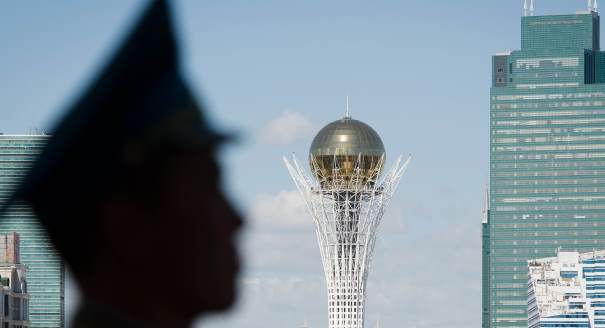The prospects for democratization in Central Asia—as shaky as they already are—are getting ever more elusive. The reason is the Arab Spring, which handed local ruling elites a new trump card, a true ace to play: they can now project themselves as guarantors of stability in their countries and thus ensure the perpetuation of their rule. In turn, the people of Central Asia have seen—mostly on their TV screens—what a revolutionary democratic process actually looks like. It is plain as day to those living in Tashkent, Ashgabat or Astana that the Syrian, Egyptian, Tunisian, and Libyan events were primarily triggered by those countries’ authoritarian rulers.
The authoritarian regimes of the Central Asian countries use the Arab Spring as a convenient argument to bolster their prestige, just as they had used the Tajik civil war in the 1990s or the Kyrgyz unrest after that. Against this backdrop, stability has definitely looked a better alternative.
“Is that what you want?” asks the official propaganda machine, pointing to the upheavals in the Middle East. “No, never,” answer the people in unison. Meanwhile, the politicians or political commentators on Russia’s federal television channels often say in passing, “That’s what democratic games lead to.” One particularly creative commentator said with obvious relief, “Thank God, our Bolotnaya Square is not their Maydan Tahrir.”
The emergence of Islamist governments in Tunisia and Egypt represents another threat posed by the Arab Spring. In fact, in both countries Islamists came to power through democratic elections. It appears that security services in Central Asian countries—especially those in Dushanbe and Tashkent—have already estimated how many votes the local Islamic opposition could receive as a result of fair elections. Incidentally, elections in Tajikistan are fast approaching.
Although Uzbekistan’s Islamist opposition is operating underground, it should be remembered that both the Tunisian Ennahda and the Egyptian Muslim Brotherhood were gathering strength while they were still illegal. One can argue that their illicit protest activities had catapulted these organizations into power.
On the other hand, the failure of the Egyptian President Mohammed Morsi, who belongs to the Muslim Brotherhood, is set to benefit Central Asian rulers. While they previously talked of the aggressiveness and the threat of Islamism, they can now add to this the Islamist leaders’ incompetence in practical matters and their inability to solve social and economic problems, not to speak of their failure to restore stability.
But paradoxically, as the Central Asian authorities cite the Arab Spring to discredit democracy and justify the existence of authoritarian systems in the region, the events in the Middle East also made the local elites realize that changes are indeed necessary. At the very least, they now understand that if things remain the same, their countries may sooner or later find themselves at an impasse that can bring about the Central Asian Spring. Of course, such a turn of events is hard to imagine today.
While the powerful and uncompromising authoritarian pillars remain in power in Kazakhstan and Uzbekistan, democratization has no chances to succeed. However, to ensure their own safety, the local elites may eventually be forced to open the door however slightly. And this can also be considered a lesson of the Arab Spring.
